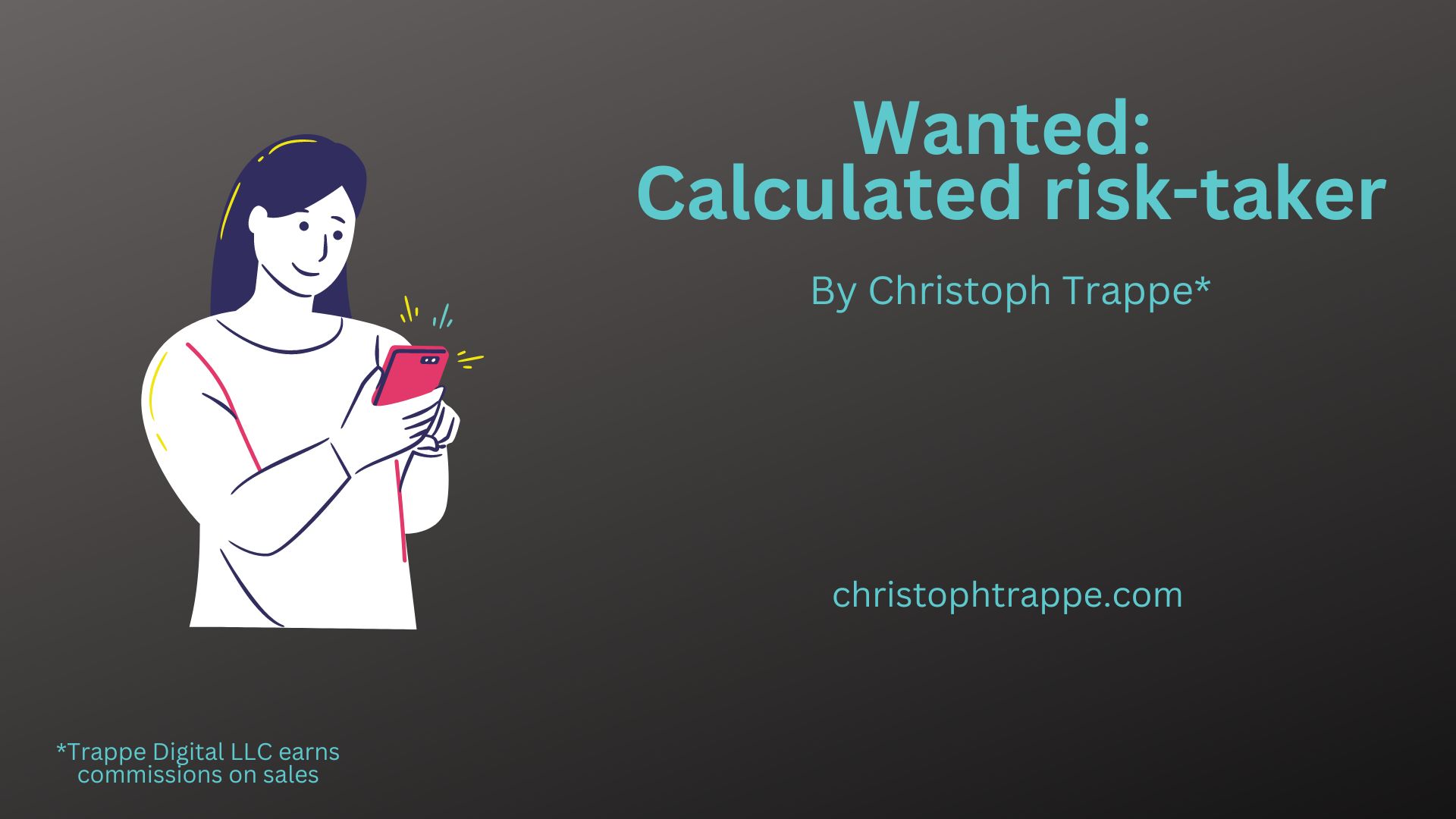Trappe Digital LLC may earn commissions from sponsored links and content. When you click and buy you also support us.
Being a calculated risk-taker comes easier to some of us. Let’s be honest; taking calculated risks always involves some level of potential to fail – which can be daunting. But, being a calculated risk-taker can help you succeed more in your marketing career.
In this article, I discuss the following:
- What is a calculated risk-taker?
- In marketing, what are the levels of risk?
- How to hedge your bets when taking risks.
What is a calculated risk-taker?
A calculated risk-taker is somebody who looks at the following:
- What do we know, and what additional knowledge can help us make the right decision going forward? That can include understanding the customer correctly, realizing the gaps in market knowledge, and then making a decision on further research or discovery. But, don’t let research stop the forward moment either. Learn as you as – as they say – is a proven strategy.
- Weighing the potential impact of the outcome – especially as they relate to the status quo and the current culture of the team and company. What can be the extreme positive, the extreme negative, and what is likely to happen?
- Evaluating what can, could, and should be done.
- And maybe, most importantly, having the oomph to get it started and get it done.
At the core, taking calculated risks means people aren’t just loose canons, nor do they fly at the seed of their pants. They are aware of the potential risks or downfalls and are making a calculated decision that whatever it is they are doing has a chance to work.
Read next: Benefits of Taking a Break from Work — Discover How to Recharge and Refresh
In marketing, what are the levels of risk?
There are certain levels of risk to consider, and they can range in these categories:
- Launching a campaign that has a negative brand impact and somehow backfires
- Adds workload to a busy team and takes away time from other important tasks
Risks certainly are usually associated with the negative. What bad thing can happen if we do this innovative or new thing? Some people might say: “But is anyone else doing this?” It’s not an unfair question, but if no new marketing tactic would ever be tried for the reason that nobody else *that you are aware of * is currently doing it, nothing new would ever get started.
But nonetheless, we want to look at where something falls from a risk-reward perspective.
How to hedge your bets when taking risks
For content creators, some risks are easier to take and integrate into current processes than others. Want to try new content types and channels and already have the content that can be repurposed? That impact on workflow is limited here. Just reuse that short-form video from one channel and try it on another, for example.
Another way to take risks but not overextend yourself is: Hit the right volume of production.
Read next: Bringing Results with Strategic Writing & Strategic Content
For example, when I only write one article a year or do one podcast episode a quarter, chances are the reward for your content strategy won’t be there. There needs to be that right level of production, experimentation, and public implementation (aka publishing/launching).
So that’s my favorite way to take risks and hedge my bets: Tie it all together and take risks in a number of projects. Even if just one out of five brings success, that’s better than failing at just one attempt.
The other way to take calculated risks and win is not to get discouraged. Oh, that one didn’t work? Let’s try another. And another and another. The trick is to keep going.


